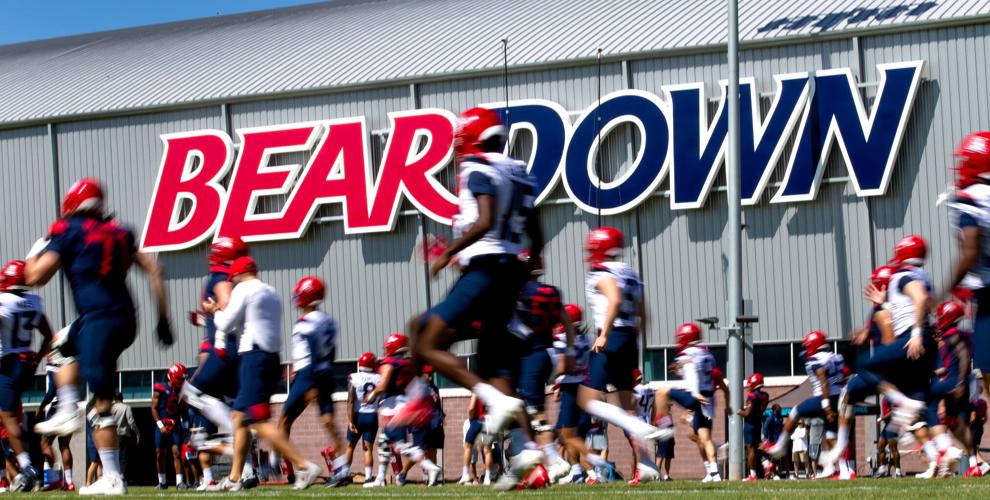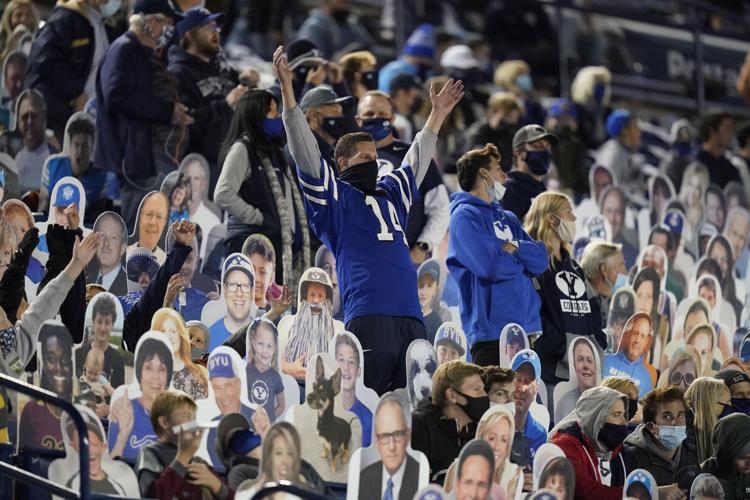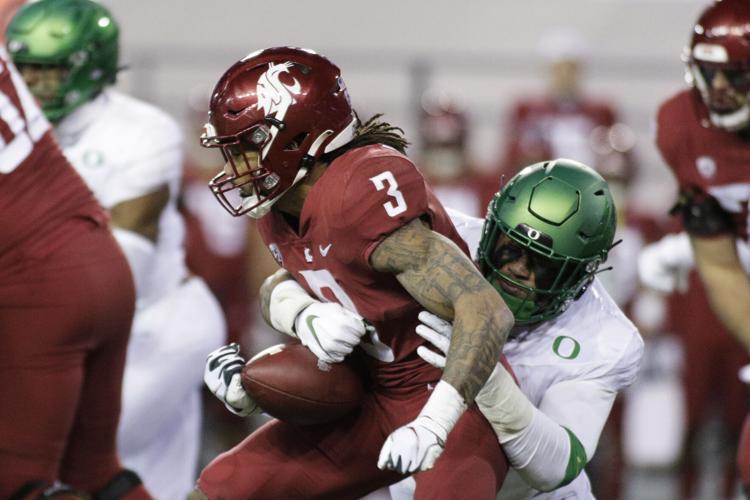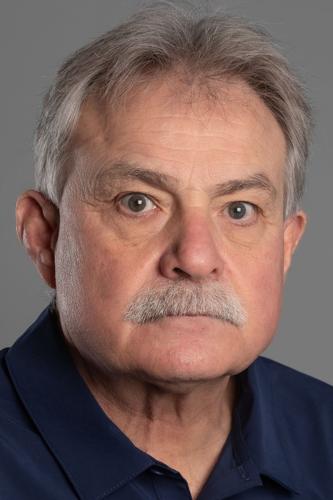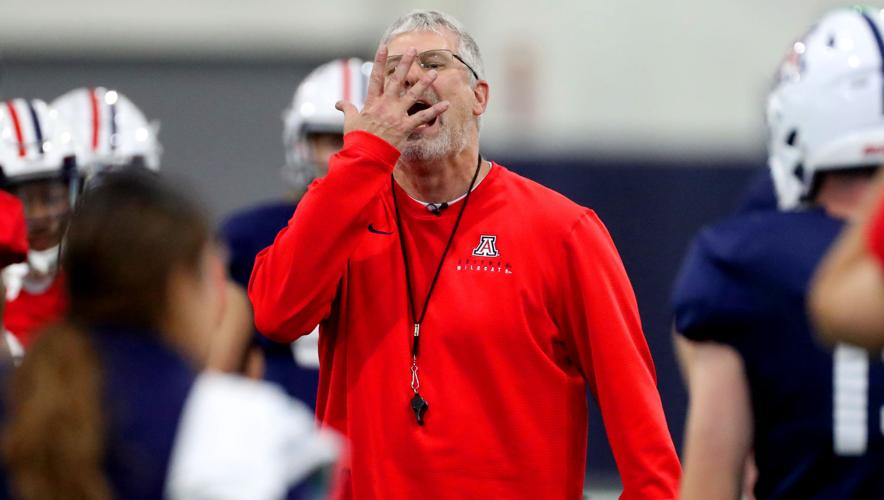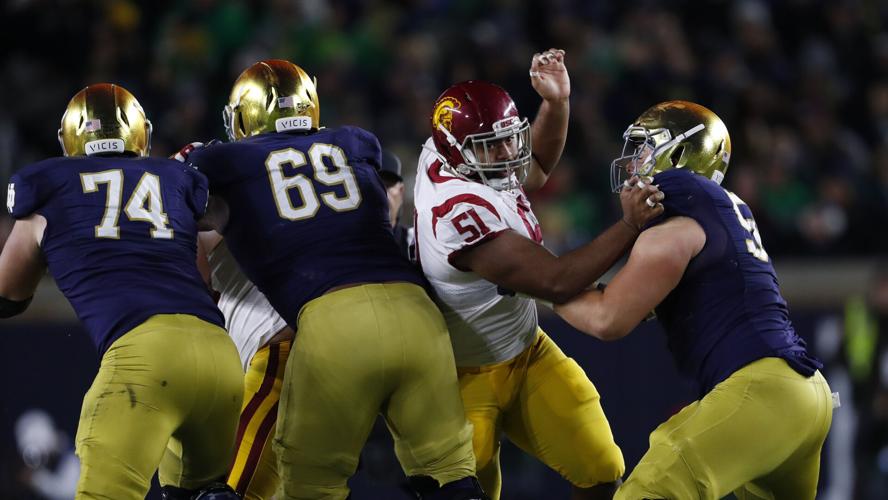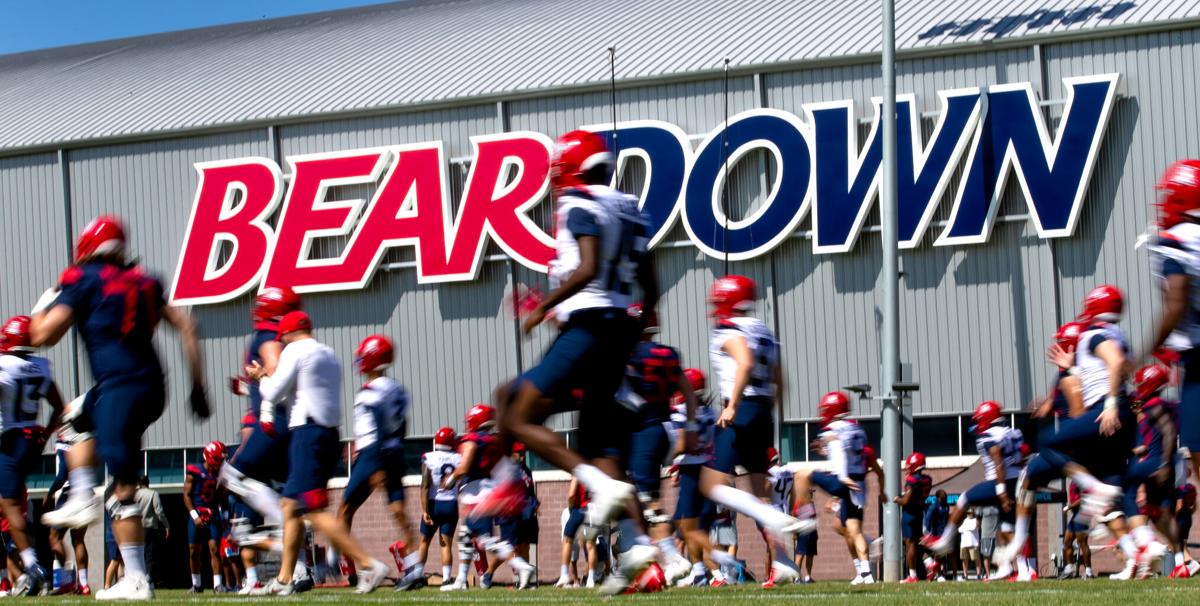Before Arizona can win, it must 'not lose'
Jedd Fisch is a master salesman, positive and tireless. In eight months, he has been more salesman than coach, and that’s what Arizona needed far more than someone like Chip Kelly or Rich Rodriguez, both of whom work on X’s and O’s at the expense of perspective and public relations.
On Fisch’s first day at Arizona, he might’ve delivered the most apt description of the inescapable situation he inherited — a school-record 12-game losing streak.
"Before you know how to win, you have to know how not to lose," he said.
There is no immediacy to Fisch’s task, and part of that is simple. Arizona plays NAU in Game 3, which means that the UA’s losing streak will not grow past 14. If NAU beats Arizona — what are the odds, 1 in 100 or less? — then the losing streak would become historic, both in Tucson and the Pac-12.
Then it would become a story too big to shake.
But that won't happen.
Oregon State holds (very lightly, I assume) the modern-day Pac-12 losing streak of 15, set both in 1990-91 and 1995-96. Arizona’s Sept. 18 home game against NAU almost surely guarantees that a losing streak will not be part of the narrative of Fisch’s first season.
First things first, right? The Wildcats can start anew with a victory over NAU, or perhaps earlier against BYU or San Diego State, and that will be Fisch’s first step in teaching his team how not to lose.
For perspective — discussed for perhaps for the last time in Tucson — here are the biggest Power 5 conference losers the last 50 years and how they learned "not to lose."
0-34: Northwestern lost 34 consecutive games from 1979-82. The Wildcats hired an eager, Fisch-type young coach, Dennis Green, who had been a Bill Walsh disciple with the San Francisco 49ers and John Elway’s offensive coordinator at Stanford. Green suffered through an 0-11 first season, but then slowly won 10 games before bailing out to rejoin Walsh and the 49ers.
0-23: Duke lost 23 straight from 1999-02, which didn’t draw a lot of attention at the nation’s foremost basketball school. But the Dookies didn’t learn from their coaching mistakes, replacing Carl Franks with Ted Roof, who then went 0-22 from 2005-07 before he was fired. Duke then got it right, hiring David Cutcliffe, the offensive mastermind behind Tennessee’s rise to power in the 1990s. Cutcliffe is still at Duke, 74-88 through 13 seasons, which, at Duke, is viewed as a success.
0-21: South Carolina lost 21 straight from 1998-00, but stopped the bleeding by hiring Lou Holtz of Notre Dame fame. It wasn’t easy: Holtz went 0-11 his first year with the Gamecocks — learning to "not lose" — but then went 8-4 and 9-3 in one of the top rebuilding jobs of the last quarter-century.
0-20: Florida State went 0-20 from 1972-74, extending the losing streak by hiring former Arizona coach Darrell Mudra, who was the wrong coach at the wrong place at the wrong time. Mudra was fired and the Seminoles hired Bobby Bowden. Bingo.
The longest losing streak in current Power 5 football is Kansas’ 0-13 streak. The Jayhawks fired the source of the problem, overvalued ex-LSU coach Les Miles. Kansas’ schedule is built to end that 0-13 plunge. The Jayhawks open against South Dakota and Coastal Carolina.
The four most head-shaking non-conference schedules
The mighty SEC isn’t all about power and pride. In Power 5 football, SEC teams engage year after year in the season’s most ridiculously easy non-conference schedules. Here are the four Cupcake Kings:
Alabama plays Mercer, New Mexico State and Southern Miss.
Auburn plays Akron, Alabama State and Georgia State.
LSU plays McNeese State, Central Michigan and Louisiana-Monroe.
Texas A&M plays Kent State, New Mexico and Prairie View A&M.
The Pac-12’s most absurd non-conference game is Oregon’s "showdown" against Stony Brook. The Ducks will pay the Seawolves $1.4 million for a game at Autzen Stadium. Stony Brook has played just one Power 5 team in history, Syracuse in 2012.
Four programs that average more fans than UCLA and Arizona

BYU fans sit among cutouts during the first half of a game last season.
In its last full season, 2019, UCLA drew an average of just 43,849 fans at the Rose Bowl, the school’s smallest average since 1982.
To help get more fans in the 90,000-seat stadium, the Bruins this year are offering free tickets to the LSU game for all high school students with a valid ID. The Bruins are also allowing all UCLA students free seats in "The Den." Why? LSU fans have already purchased 12,000 tickets and are expected to number about 20,000 on game day at the Rose Bowl.
Here are five unlikely schools that averaged more fans at home games in the 2019 season than either UCLA (43,949) or Arizona, which averaged just 39,532 at Arizona Stadium, its smallest home average since 1974.
Iowa State: 59,794. That would’ve ranked second in the Pac-12 in 2019 behind Washington.
BYU: 59,547. The Cougars are a true football school, packing the stands even when the home schedule of 2019 included Liberty and Idaho State.
Texas Tech: 53,418. Have you ever been to Lubbock, Texas? True, the Red Raiders are the only game in town, but in 2019 Tech outdrew Arizona State (49,166), which touts itself as a football school.
Minnesota: 46,190. The Golden Gophers played home games against South Dakota State and Georgia Southern and still averaged more fans than Cal (42,433) and Stanford (37,081).
The four best players in the Pac-12

Oregon linebacker Noah Sewell, right, has the looks of a first-round NFL draft pick.
For perhaps the first time in several decades, the four players who project as the most likely game-changers in Pac-12 football are all defensive players. Here’s the list and the varied backgrounds of the four:
Kayvon Thibodeaux, DE, Oregon: From SoCal prep powerhouse Westlake Village, Thibodeaux’s only other recruiting visit was to Alabama. Arizona also offered Thibodeaux a scholarship. He declined to visit Tucson.
Devin Lloyd, LB, Utah: The Utes were the only Pac-12 school to offer the linebacker from Chula Vista, California, a scholarship. His other offers were Boise State, Utah State, UNLV, Dixie State and Montana State. He fits Utah’s tough-guy image.
Nate Landman, LB, Colorado: A three-star recruit from Danville, California, Landman chose CU over Arizona, Oregon State and Washington State. He’s a volume tackler, a never-quit team leader who gets the most of his ability.
Noah Sewell, LB, Oregon: In his second season of college football, Sewell has the look of a future first-round NFL draft pick. He’s from Orem, Utah, and turned down hometown schools Utah and BYU — as well as Alabama — to give the Ducks the Pac-12’s most feared defense.
Top defensive coordinator in Pac-12? Start with UA's Brown

Don Brown
For a 25-year period from 1985-2010, Arizona was unofficially known as the Cradle of Defensive Coordinators. The Wildcats were almost always a defensive threat with a succession of defensive coordinators like Moe Ankney, Larry Mac Duff, Rich Ellerson, Duane Akina and Mark Stoops.
But that streak ended when Stoops, now the head coach at Kentucky, left to be Florida State’s defensive coordinator in 2010.
Now, with 66-year-old Don Brown as Arizona’s DC, Arizona yields to no Pac-12 team when it comes to defensive coaching credentials. Here’s how I rank the top half of the league’s DCs:
1. Don Brown, Arizona. Age: 66. Previous coaching assignments: Michigan, Dartmouth, Yale, Boston College, UMass, UConn, Maryland, Northeastern. Reputation: Dr. Blitz. Mr. Energy. Brown played college football at tiny Norwich College and grew up in Massachusetts. This is his first job west of the Mississippi River. His reputation proceeded his arrival in Tucson, and it should grow with ex-NFL defensive coaches DeWayne Walker, Chuck Cecil and Ricky Hunley on staff. If that's not the top defensive staff in the Pac-12, what is?
2. Morgan Scalley, Utah. Age: 41. Scalley has only coached at one school, Utah, his alma mater. He begins his 14th season with the Utes, who have built the league’s most effective defensive system the last decade.
3. Tim DeRuyter, Oregon. Age: 58. In his first year at Oregon, DeRuyter was not a success as Fresno State’s head coach, but his resume is deep and successful. DeRuyter has also coached at Cal, Texas A&M, Nevada, Navy, Ohio, Air Force.
4. Pete Sirmon, Cal. Age: 42. A four-year NFL linebacker, Sirmon has bounced around from Tennessee to Washington, USC, Mississippi State, Louisville and now Cal. The former Oregon Ducks standout seems destined to be a head coach.
5. Lance Anderson, Stanford. Age: 50. Anderson, now in his 16th season at Stanford, built his career from the bottom up. He started at his alma mater, Idaho State, before advancing to Bucknell, St. Mary’s, Utah State and San Diego before hitting it big under Jim Harbaugh and David Shaw at Stanford.
6. Chris Wilson, Colorado. Age: 52. A former Oklahoma Sooners standout and team captain, Wilson made an impressive debut at CU last year. It wasn’t unexpected: He came from NFL stints with the Eagles and Cardinals, and before that coached at USC, Georgia, Oklahoma and Mississippi State.
Where are they now?

Arizona will pay former defensive coordinator Paul Rhoads nearly $800,000 not to coach the Wildcats this season. He’ll make $48,000 to serve as a defensive analyst at Ohio State.
Arizona’s football coaching staff splintered — vanished, actually — after Kevin Sumlin was fired last season. But as is so true in college football, most of Sumlin’s 10 assistant coaches found work, albeit not at the same level.
• Paul Rhoads, defensive coordinator: Now he is a defensive analyst at Ohio State.
• Andy Buh, linebackers: Now he is a linebackers coach at Illinois.
• Greg Burns, secondary: He is now a defensive analyst at UCLA.
• Kyle DeVan, offensive line: DeVan is now an offensive analyst at Michigan.
• Taylor Mazzone, receivers: He is now receivers coach at University of San Diego.
• Stan Eggen, defensive line: He is not coaching this season.
• Jeremy Springer, special teams: He is the special teams coach at Marshall.
• A. J. Steward, running backs: He is the running backs coach at Oregon State.
• Theron Aych, receivers: He is the receivers coach at UTEP.
• Noel Mazzone, offensive coordinator: He is not coaching this season.
The Pac-12’s six most anticipated non-conference games

USC’s Oct. 23 game at Notre Dame will again be among the top nonconference matchups of the college football season.
Oregon at Ohio State, Sept. 11: Early indication of how good (or bad) the Pac-12 is.
Washington at Michigan, Sept. 11: Are the Huskies the real thing under second-year coach Jimmy Lake?
Utah at BYU, Sept. 11: The Holy War is the top sporting event in Utah, any sport.
USC at Notre Dame, Oct. 23: The big question might be if Trojans coach Clay Helton can survive the season without beating the Irish.
Stanford vs. Kansas State, Sept. 4: Played at the Dallas Cowboys facility in Texas, it’s a game that should help determine if Stanford’s three-year lapse as a national power continues.
LSU at UCLA, Sept. 4: The chance to beat an SEC team may hold the key to Chip Kelly’s uncertain coaching future.
Four statistics Arizona must improve ASAP
• Arizona ranked dead last among 2020 FBS teams in getting to the quarterback. The Wildcats had just two sacks in 124 passing attempts, or 1.6% success (or lack of success) rate.
• Arizona allowed an average of 3.02 points per opponents possession last season. That was 112th in the NCAA.
• Arizona ranked 127th in the nation last year in field position, starting an average drive at its 23 yard line. By comparison, ASU started at its 35.
• Arizona was 12th in the Pac-12 in total defense (473 yards per game) and 11th in total offense (370 yards per game). The Wildcats were also last in scoring, 17.4 points. No need to wonder how they finished 0-5.
One man’s Pac-12 predictions
South Division
1. Utah: 9-3 overall, 6-3 in Pac-12. The Utes are the toughest out in the division.
2. USC: 8-4 overall, 6-3 in Pac-12. One of these years the Trojans will play up to their talent.
3. UCLA: 8-4 overall, 5-4 in Pac-12. Kelly may have finally rebuilt the Bruins roster to Top 25 levels.
4. ASU: 7-5 overall, 4-5 in Pac-12. The dominoes start to fall with an early-season loss at BYU.
5. Colorado: 4-8 overall, 3-6 in Pac-12. Quarterbacking issues ahead.
6. Arizona: 4-8 overall, 2-7 in Pac-12. If Arizona goes 5-7, Jedd Fisch will get votes as coach of the year.
North Division
1. Oregon: 10-2 overall, 8-1 in Pac-12. Road games at Stanford, UCLA and Washington gives the Ducks league’s most difficult conference schedule.
2. Washington: 8-4 overall, 6-3 in Pac-12. Not a vintage UW team.
3. Stanford: 7-5 overall, 5-4 in Pac-12. David Shaw rediscovers his mojo.
4. Cal: 6-6 overall, 4-5 in Pac-12. The Utah of the North division, with less talent.
5. Oregon State: 4-8 overall, 3-6 in Pac-12. No longer an automatic "W" for opponents.
6. Washington State: 4-8 overall, 2-7 in Pac-12. Nick Rolovich’s job security becomes an issue.


